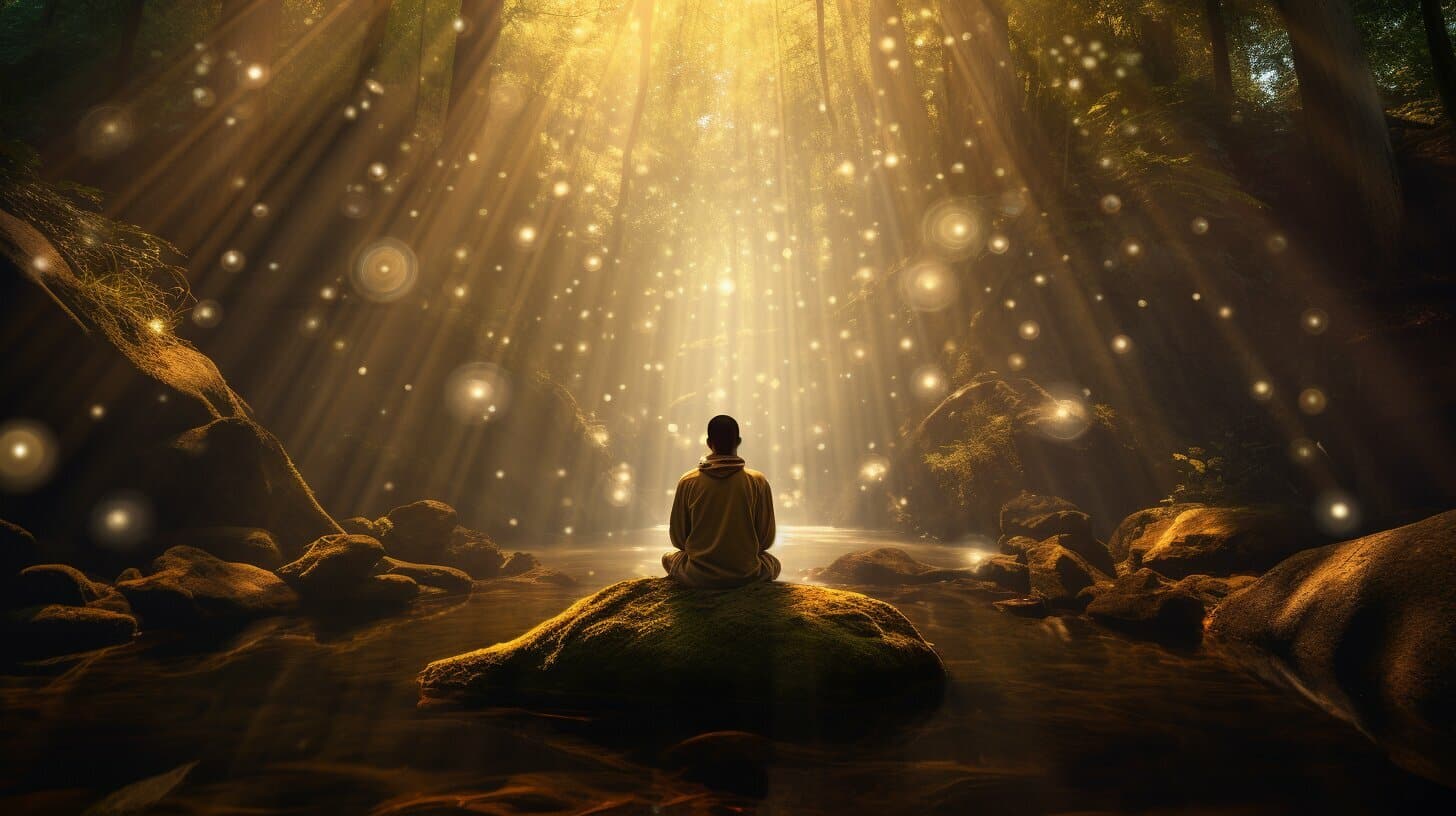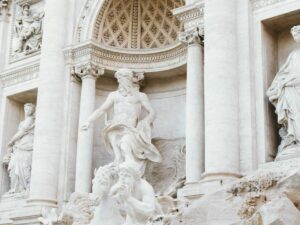Have you ever felt like there’s more to life than what meets the eye? Like hidden layers beneath the surface of everyday reality, waiting to be peeled back? I remember my own first brush with esoteric spirituality—it was during a rainy afternoon in a dusty old bookstore. I stumbled upon a worn copy of a book on alchemy, and as I flipped through its pages, something clicked. It wasn’t just about turning lead into gold; it was a metaphor for transforming the self. That moment sparked a journey that’s shaped how I see the world, blending curiosity with a dash of wonder. Esoteric spirituality invites us into that same adventure, promising insights that mainstream paths often overlook. Let’s dive in together, exploring its depths without getting lost in the fog.
What is Esoteric Spirituality?
Esoteric spirituality is all about the hidden, inner dimensions of existence—knowledge and practices reserved for those who seek deeper truths beyond the obvious. Unlike exoteric traditions, which are open to everyone and focus on outward rituals, esotericism delves into secret teachings, personal transformation, and the mystical connections between the human soul and the universe. Think of it as the VIP section of spirituality, where symbols, rituals, and inner experiences unlock profound wisdom.
At its core, it’s a quest for gnosis, or direct, experiential knowledge of the divine. This isn’t rote learning from a book; it’s an intimate encounter with reality’s unseen forces. From ancient mystery schools to modern occult practices, esotericism emphasizes that true understanding comes from within, often through meditation, symbolism, and rituals that align the individual with cosmic energies.
The Historical Roots of Esoteric Traditions
Tracing esoteric spirituality’s origins feels like unraveling a ancient tapestry, thread by thread. It stretches back millennia, weaving through cultures and eras, always adapting yet preserving its core mystery.
Ancient Origins
In the cradle of civilization, esoteric ideas flourished in mystery religions of ancient Greece and Rome, where initiates underwent secret rites to glimpse divine truths. Think Eleusinian Mysteries, promising enlightenment through symbolic death and rebirth. Meanwhile, in Egypt and Mesopotamia, Hermeticism emerged, attributed to the mythical Hermes Trismegistus, blending philosophy, magic, and astrology into a system for understanding the universe’s hidden laws.
Gnosticism, arising in the early Christian era, added another layer, teaching that salvation comes from inner knowledge escaping the material world’s illusions. These early traditions set the stage, emphasizing secrecy to protect sacred wisdom from the uninitiated.
Renaissance Revival
Fast-forward to the 15th century, and esoteric spirituality got a major reboot during the Renaissance. Scholars like Marsilio Ficino and Pico della Mirandola rediscovered ancient texts, translating Hermetic writings and integrating Kabbalah—a Jewish mystical tradition exploring God’s emanations through the Tree of Life. They saw these as parts of a universal wisdom, or prisca theologia, predating organized religion.
This era blended science and mysticism; alchemy wasn’t just lab work but a spiritual process of purification. Paracelsus, a key figure, pioneered ideas that influenced modern medicine while rooting them in esoteric principles like “as above, so below.”
Modern Developments
By the 19th century, esotericism exploded into the public eye with the occult revival. Helena Blavatsky founded Theosophy, synthesizing Eastern and Western mysticism into a global spiritual framework. Groups like the Hermetic Order of the Golden Dawn, with members including Aleister Crowley, formalized ritual magic and tarot as tools for enlightenment.
The 20th century brought New Age movements, democratizing esotericism through books, workshops, and online communities. Today, it influences everything from wellness trends to pop culture, though it remains a path for those willing to question the mainstream.
Key Concepts in Esoteric Spirituality
Esotericism isn’t a random grab-bag of ideas; it’s built on foundational principles that tie its traditions together. These concepts act like keys, unlocking doors to higher awareness.
- Gnosis: The pursuit of direct, intuitive knowledge of the divine, beyond intellectual understanding. It’s about experiencing truth, not just believing it.
- Correspondence: The idea that everything in the universe is interconnected—”as above, so below.” Microcosm reflects macrocosm, linking personal growth to cosmic patterns.
- Imagination and Symbolism: Tools for accessing hidden realms. Symbols aren’t literal; they’re bridges to deeper realities, like the alchemical phoenix representing rebirth.
- Transmutation: Transforming base elements (like ego or suffering) into higher states, mirroring alchemy’s lead-to-gold metaphor for spiritual evolution.
These ideas foster a holistic view, where spirituality integrates mind, body, and cosmos.
Major Traditions and Practices in Esoteric Spirituality
Esotericism spans a rich array of traditions, each with unique practices yet sharing a focus on inner transformation. Here’s a closer look at some pillars.
Hermeticism
Rooted in ancient Egyptian-Greek wisdom, Hermeticism teaches seven principles, like mentalism (all is mind) and vibration (everything moves). Practices include meditation on these laws and ritual invocations to align with universal forces.
It’s practical spirituality—using affirmations and visualization to manifest change, much like modern law of attraction techniques.
Kabbalah
This Jewish mystic system maps the divine through the Tree of Life, a diagram of 10 sephirot (emanations) and paths. Study involves contemplating these symbols to ascend spiritually, often through prayer and ethical living.
Modern adaptations, like those in celebrity circles, simplify it, but true Kabbalah demands deep commitment for insights into creation’s blueprint.
Alchemy
More than medieval chemistry, alchemy is esoteric psychology. It uses symbols like the philosopher’s stone for inner purification—dissolving ego to reveal the true self.
Practices might involve journaling “alchemical operations” on personal flaws, turning them into strengths. It’s therapy with a mystical twist.
Astrology and Divination
Astrology charts celestial influences on personality and fate, using birth charts for self-insight. Divination tools like tarot or runes tap intuition for guidance.
These aren’t fortune-telling gimmicks; they’re mirrors reflecting subconscious patterns, helping navigate life’s mysteries.
Eastern Influences: Tantra and Sufism
While often Western-focused, esotericism draws from Eastern traditions. Tantra uses energy work and rituals for union with the divine, while Sufism’s whirling dervishes seek ecstasy through dance and poetry.
These add sensual, experiential layers, reminding us spirituality can be joyful, even ecstatic.
Benefits and Challenges of Esoteric Spirituality
Like any path, esotericism has its ups and downs. Let’s break it down honestly.
Pros
- Empowers personal growth through self-discovery and tools like meditation.
- Fosters creativity and intuition, enhancing problem-solving in daily life.
- Builds community among like-minded seekers, reducing isolation.
- Offers holistic healing, integrating mind-body-spirit for overall well-being.
Cons
- Risk of misinformation from unverified sources or “gurus.”
- Can lead to isolation if one dismisses mainstream views entirely.
- Practices might overwhelm beginners, causing confusion or burnout.
- Potential for ego inflation, mistaking mystical experiences for superiority.
Balancing these keeps the journey grounded and rewarding.
Esoteric vs. Exoteric Spirituality: A Comparison
Ever wondered how esoteric paths differ from mainstream religion? Here’s a side-by-side look.
| Aspect | Esoteric Spirituality | Exoteric Spirituality |
|---|---|---|
| Accessibility | Hidden, for initiates only | Open to all, public teachings |
| Focus | Inner transformation, gnosis | Outer rituals, community worship |
| Knowledge Source | Personal experience, symbols | Scriptures, dogma |
| Examples | Kabbalah, Alchemy | Church services, prayer groups |
| Goal | Union with divine essence | Salvation through faith |
This table highlights the inward vs. outward dynamic—esoteric complements exoteric, adding depth without replacing it.
People Also Ask
Drawing from common searches, here are real questions people have about esoteric spirituality, with concise answers.
- What is the difference between esoteric and exoteric? Esoteric is inner, secret knowledge for the few; exoteric is outer, accessible teachings for the masses.
- Why are people drawn to esoteric practices today? In a fast-paced world, they offer personal empowerment and meaning beyond materialism, appealing to those seeking authenticity.
- Is esoteric spirituality the same as occultism? Not exactly—occultism focuses on hidden sciences like magic, while esotericism is broader, encompassing spiritual wisdom.
- Can esoteric practices be dangerous? Like any tool, misuse can lead to imbalance, but approached mindfully, they’re transformative.
Where to Get Started with Esoteric Spirituality
If you’re ready to dip your toes in, start local or online. Look for metaphysical bookstores, like those in Sedona, Arizona, or Glastonbury, UK—hubs for esoteric vibes. Online, platforms like Meetup.com host groups for meditation or tarot circles.
For deeper dives, visit sites like the Theosophical Society (theosociety.org) or academic centers such as the University of Amsterdam’s program on Western Esotericism. These offer lectures, libraries, and communities to guide your exploration.
Best Tools for Esoteric Practices
Ready to practice? Here are top picks for beginners, blending tradition with accessibility.
- Tarot Decks: The Rider-Waite-Smith deck is classic for its symbolic imagery—great for daily pulls. Find it on Amazon for under $20.
- Books: “The Kybalion” for Hermetic principles or “The Secret Teachings of All Ages” by Manly P. Hall. These are gateways to core ideas.
- Meditation Apps: Insight Timer offers esoteric-guided sessions, like chakra alignments, free with premium upgrades.
- Crystals and Tools: Amethyst for intuition or a pendulum for divination—shop ethically at sites like Etsy or Crystal Vaults.
- Online Courses: Platforms like Udemy have affordable classes on Kabbalah or alchemy, often under $15 during sales.
These tools make esotericism approachable, turning abstract concepts into tangible experiences.
FAQ
What is esoteric spirituality in simple terms?
It’s the pursuit of hidden spiritual knowledge through personal practices, focusing on inner growth rather than public rituals.
How does esoteric spirituality differ from mainstream religion?
Mainstream religion emphasizes community and doctrine; esotericism prioritizes individual insight and mysticism.
Can anyone practice esoteric spirituality?
Yes, but it requires curiosity and discipline—start small with meditation or reading to build understanding.
What are some common misconceptions about esotericism?
It’s not “evil” or just superstition; it’s a legitimate path to wisdom, often misunderstood due to its secretive nature.
How has esoteric spirituality influenced modern culture?
From psychology (Jung’s archetypes) to art (Surrealism), it shapes ideas about the subconscious and creativity.
As we wrap up, remember my bookstore epiphany? Esoteric spirituality isn’t about escaping reality—it’s about enriching it. Whether through a tarot reading that sparks insight or a meditation revealing inner peace, it offers tools for a fuller life. Approach with an open heart, question everything, and let the mysteries unfold. Who knows what you’ll uncover? If this resonates, share your own story—after all, the journey is better together.








